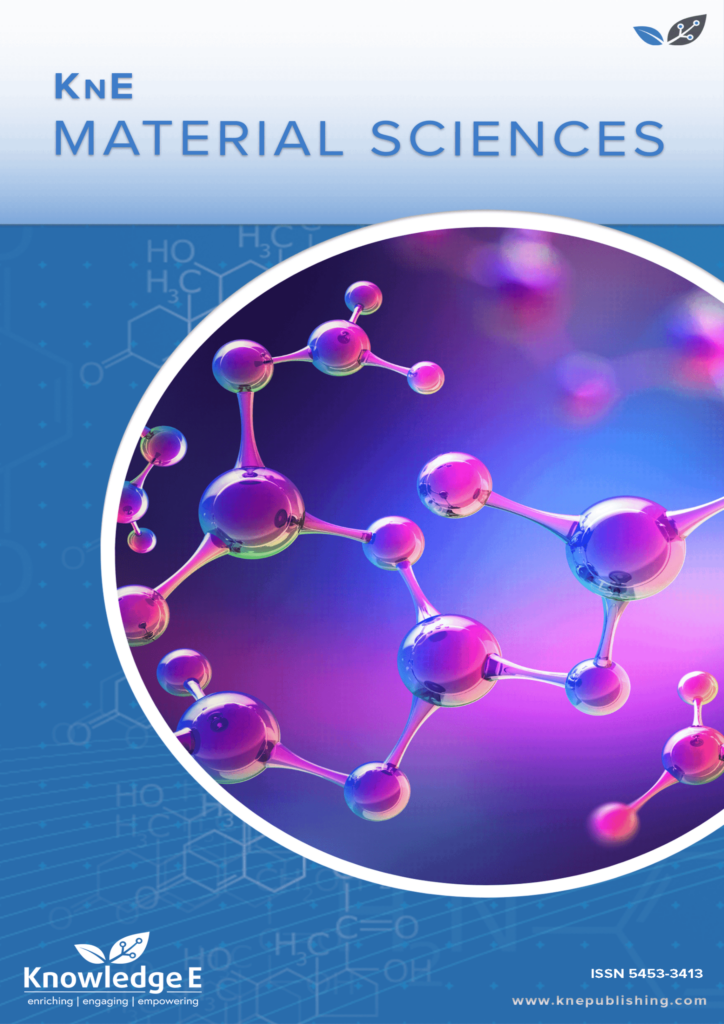
KnE Materials Science
ISSN: 2519-1438
The latest conference proceedings on physical materials, energy materials, electrical materials.
Increase in Thermal Stability of Hydride of the Titanium
Published date: May 06 2018
Journal Title: KnE Materials Science
Issue title: 15th International School-Conference "New Materials – Materials of Innovative Energy" (MIE)
Pages: 259–269
Authors:
Abstract:
The paper presents the results of studies of the modification of the surface of a fraction of titanium hydride with borosiloxanes in order to increase its thermal stability at high temperatures and protect titanium from oxidation for possible use as a heat-resistant neutron-protective material in nuclear power engineering. A theoretical model has been developed for modifying a fraction of titanium hydride with borosilicate by
sol-gel technology from aqueous solutions of sodium organosilicinate and boric acid. The technology for modifying titanium hydride consists in the preliminary chemical activation of the surface of the fraction by a silicone oligomer - sodium organosilicinate (OSN) followed by treatment with boric acid, separation of the solid phase of titanium hydride and subsequent drying at 100 ∘C. During the synthesis of sodium borosilicate
and its thermal treatment in the temperature range 100-500 ∘C, complex structuralphase rearrangements were observed. At 100 ∘C, an amorphous-crystalline silicate of CH3 (Si30.4B1.6O64) Na monoclinic syngony with large crystal lattice parameters was formed. The thermal treatment of the borosilicate coating at 300 ∘C led to a
change in the radiographic characteristics of the crystalline phase and the formation of a monoclinic NaBSi2O5
(OH)2 structure with continuous layers of silicon-oxygen tetrahedra. Further crystallization of borosilicate at a temperature of 500 ∘C leads to the formation of a silicate of the skeleton type NaBSi3O8 of triclinic syngony. Above 500 ∘C, sodium borosilicate passes into a glassy state.
References:
[1] Pavlenko, VI, Eduardenko, OD, Cherkashina, NI, Kupriyeva, OV, 2015. Study of the attenuation coefficients of a photon and neutron beam as it passes through a titanium hydride. Surface. X-ray, synchrotron and neutron studies, 6: 21-25.
[2] Yastrebinsky, R.N., Pavlenko, V.I., Cherkashina, N.I., Kuprieva, O.V., 2015. Study of the characteristics of neutron and gamma radiation attenuation compositions based on titanium hydride. Problems of atomic science and technology, 2: 84-88.
[3] Matyukhin, PV, Yatrebinsky, RN, 2011. Composite material for radiation protection from gamma radiation. Bulletin of Belgorod State University. V.G. Shukhov, 3: 15-18.
[4] Kupreeva, OV, 2014. Thermodynamic calculations of the thermal dissociation of titanium hydride. Bulletin of Belgorod State University. V.G. Shukhova, 5: 161-163.
[5] Trubitsyn, MA, Gabrouk, NG, Oleinikova, II, Thuan, LV, Dat, DV, 2012. Synthesis of modified nanohydroxyapatites by precipitation from solutions and investigation of their bioresorbability. Scientific bulletins of the Belgorod State University. Series: Natural Sciences, 3 (18): 180-185.
[6] Medvedev, EF, 2009. The hydrogen permeability of silicate and borosilicate glasses: the fundamentals of phenomenology, sol-gel synthesis and analysis of charge components. Monograph. Sarov, с.: 364.
[7] Gorshkov, VS, Timashev, VV, 1981. Methods of physico-chemical analysis of silicates. Moscow: Higher School, с.: 335.
[8] Bregg, U., 1967. Crystalline structure of minerals. Moscow: The World, pp. 410.
[9] Milovsky, AV, 1985. Mineralogy and petrography. Moscow: Nedra, p.: 432.
[10] Godovikov, AV, 1983. Mineralogy. M.: Nedra, с.: 647.